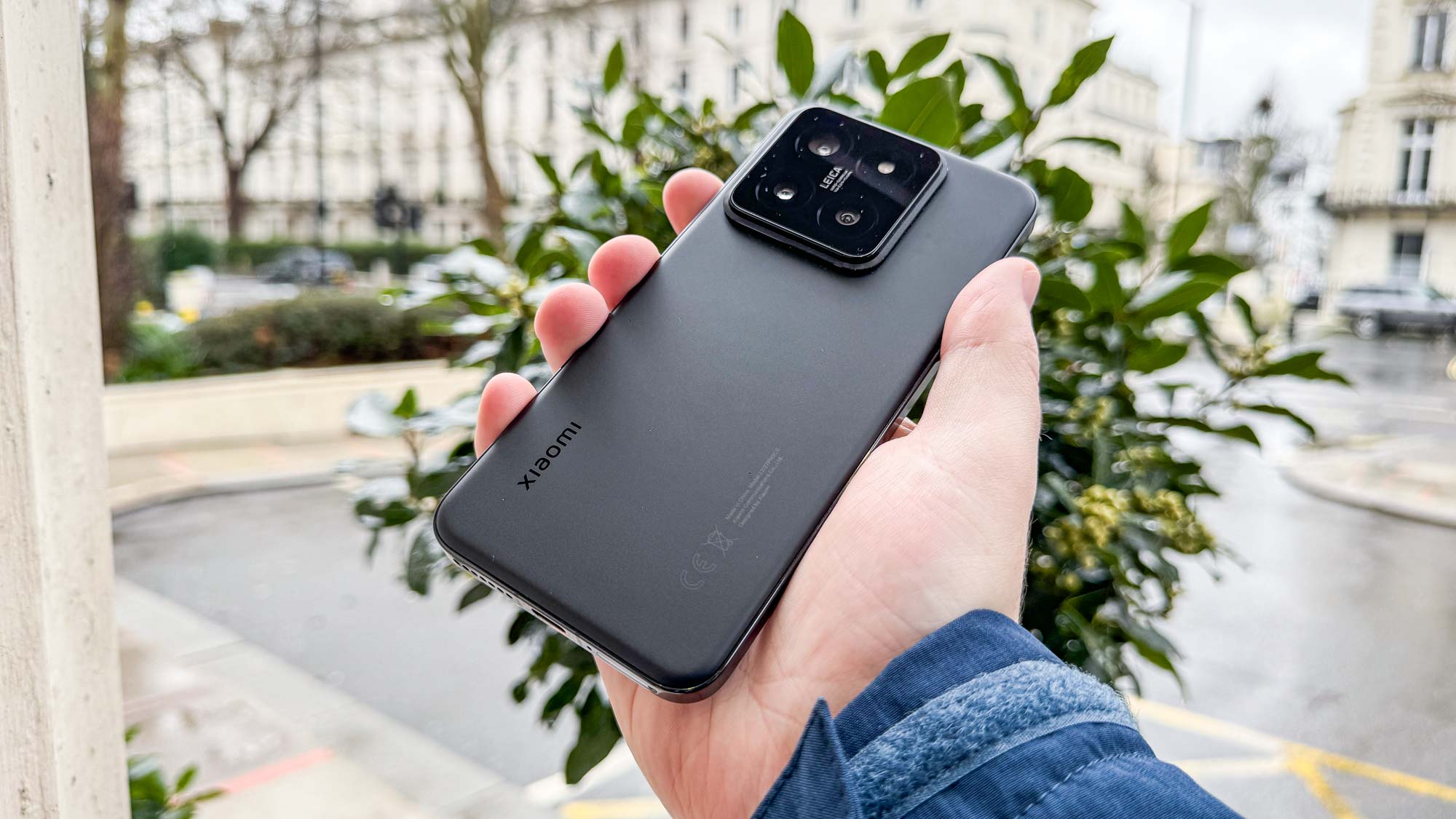
It's a real shame that the Xiaomi 14 is not going to be offered for sale in the U.S. because it's exactly the sort of phone that buyers left wanting by Samsung, Google or Apple's base flagship models are looking for.
As other manufacturers pour their focus and best tech into their larger phones, Xiaomi's ensured that its smaller new phone still gets some fun toys. Its triple 50MP cameras are rarely found on phones like this, plus it's got a great battery, charging and display specs than its rivals, while still offering similar performance chops.
Aside from Xiaomi not selling phones in the U.S., it is a little more expensive than the typical basic flagship phone, though you'd expect that for the specs it offers. Also the hype Xiaomi's been generating around its new HyperOS software seems misplaced, at least right now. If you're not too fussed about software tricks or AI features though, the Xiaomi 14 is here to satisfy your craving for flagship features while being a little more hand- and pocket-friendly.
Xiaomi 14: Specs
Xiaomi 14: Price and release date
Xiaomi's not announced when the Xiaomi 14 will launch for the global market, but we know it’ll cost 999 euros for the basic model.
Xiaomi sold the 14's predecessor, the Xiaomi 13, from £849 last year. If Xiaomi keeps with the same pricing this year, that would put the 14 between the £799 Galaxy S24 and £999 Galaxy S24 Plus in price. Or a fair bit more than the £699 Pixel 8 but still cheaper than the £999 Pixel 8 Pro if you're Google-minded.
Xiaomi 14: Design and display
The Xiaomi 14 is a 6.36-inch handset, making it a little larger than the basic Galaxy S24, Pixel 8 or iPhone 15 Pro, but smaller than many other flagships like the 6.7-inch iPhone 15 Pro Max or the 6.8-inch Galaxy S24 Ultra. It barely qualifies as small enough for the best small phones, but it’s still smaller than the average.
The 14 has an iPhone-like profile at first glance, with its flat display and flat aluminum sides. But turning the Xiaomi over reveals a rounded back panel for a comfier fit in your palm. Although the square camera block does look very Apple-y still.
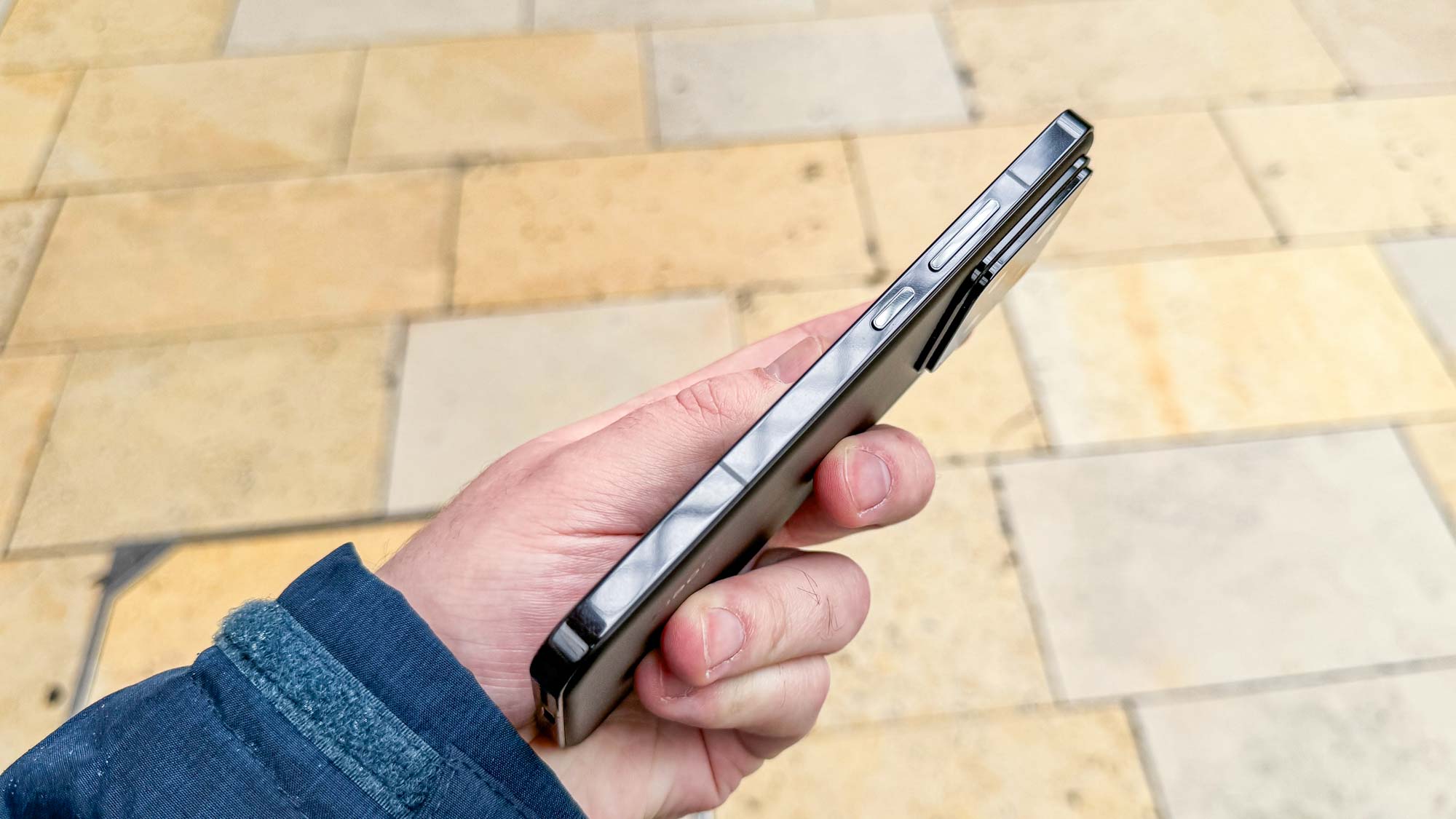
Xiaomi claims the 14 is IP68 rated, and uses Gorilla Glass Victus to protect the display. That’s an older standard of toughened glass than the newer Victus 2 or latest Gorilla Armor Glass, but it should still be on par with the majority of Android flagship phones in terms of durability.
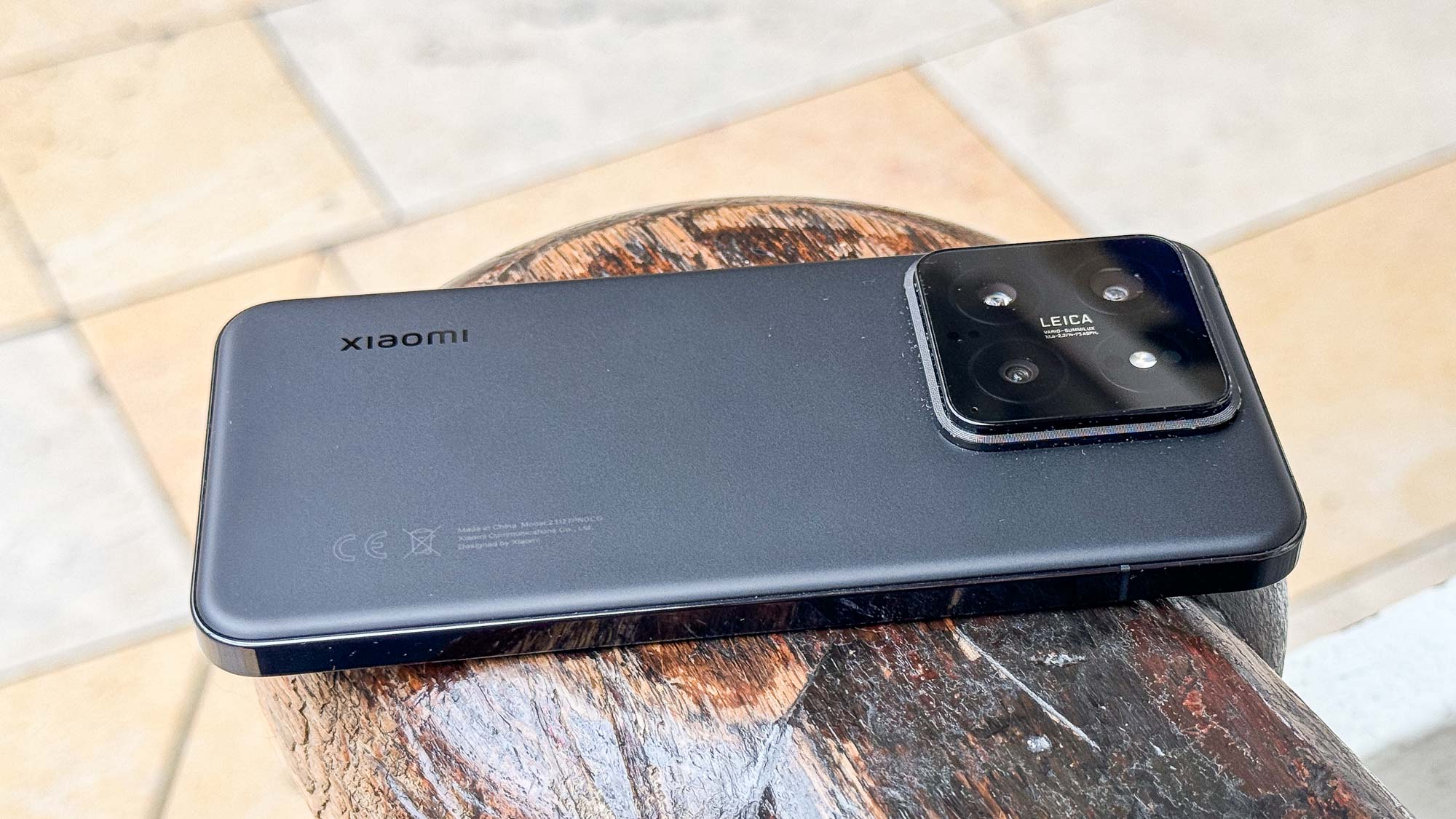
You have a relatively limited color selection of Black, White or Jade Green when picking out a Xiaomi 14 for yourself. All these colors do look good on the matte-textured back glass of the phone though, with even the liveliest green option looking quite dignified.
Flipping the phone back over, the display is an OLED unit with an adaptive 1 - 120Hz refresh rate, just like other leading Android phones. It's a little unusual however in that it features 1.5K resolution, which sits between common FHD and QHD resolution standards. This means more detail on-screen than other compact flagship phones, which tend to plump for FHD as a standard.
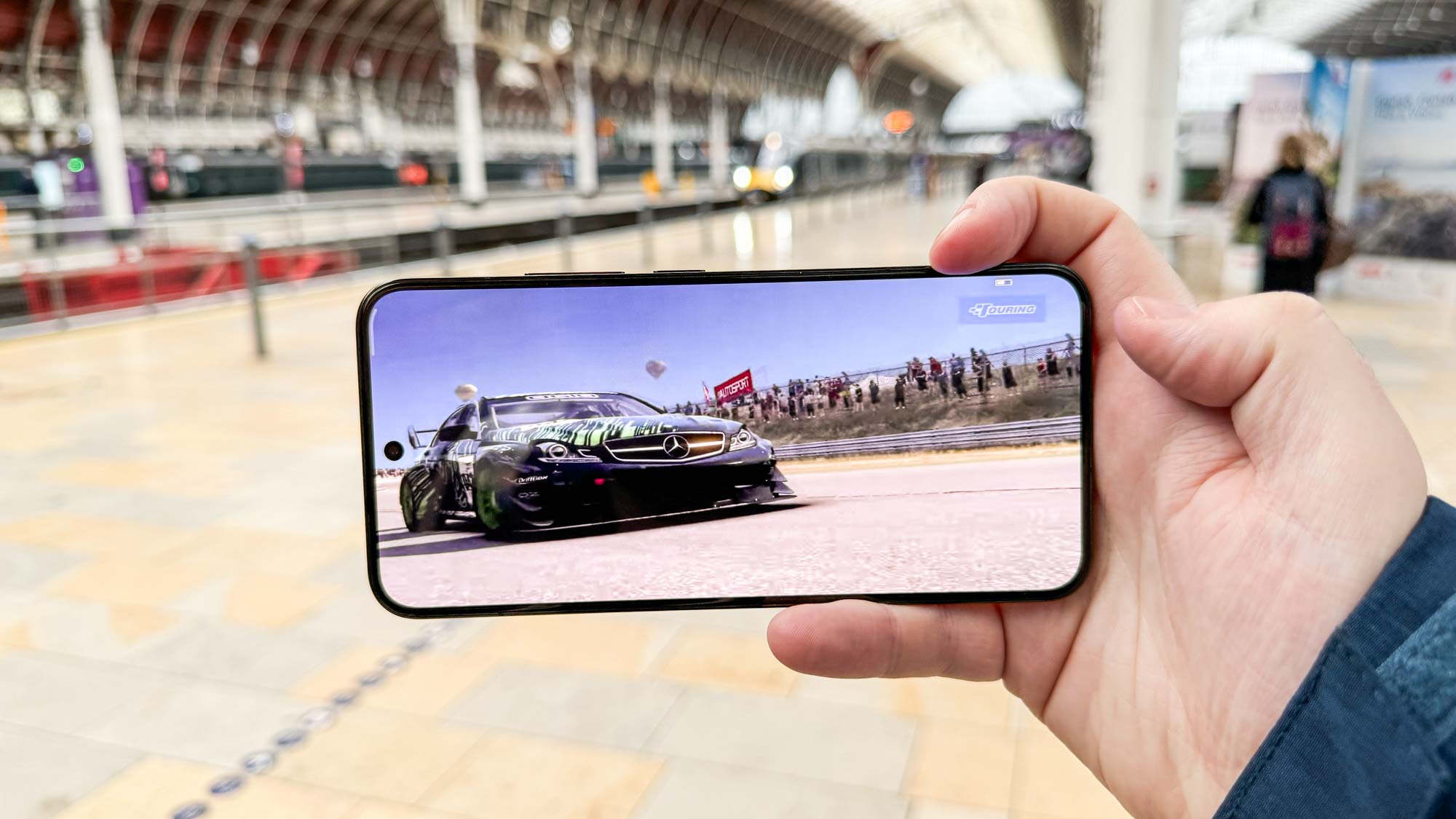
Xiaomi's official claims are that the 14's display is capable of producing up to 3,000 nits of brightness, or up to 1,000 nits under more regular use. To my eyes, the OnePlus 12 and the Galaxy S24 Ultra with its Extra Brightness mode enabled are brighter than the Xiaomi, while the Pixel 8 Pro is similarly bright. So while the Xiaomi doesn't appear to have class-leading brightness, it's still strong in this area.
Xiaomi 14: Cameras
Even though it's not a Pro or Ultra-branded phone, the Xiaomi 14 has an impressive selection of cameras. All three of its rear cameras have 50MP sensors, covering, main, ultrawide and 3.2x telephoto duties. There's also a 32MP selfie camera on the front, rounding out a phone that's not short on megapixels. Xiaomi's relationship with camera company Leica continues with the 14, offering different color profiles and pro settings in the camera app, plus refreshed camera lenses for greater brightness in images.
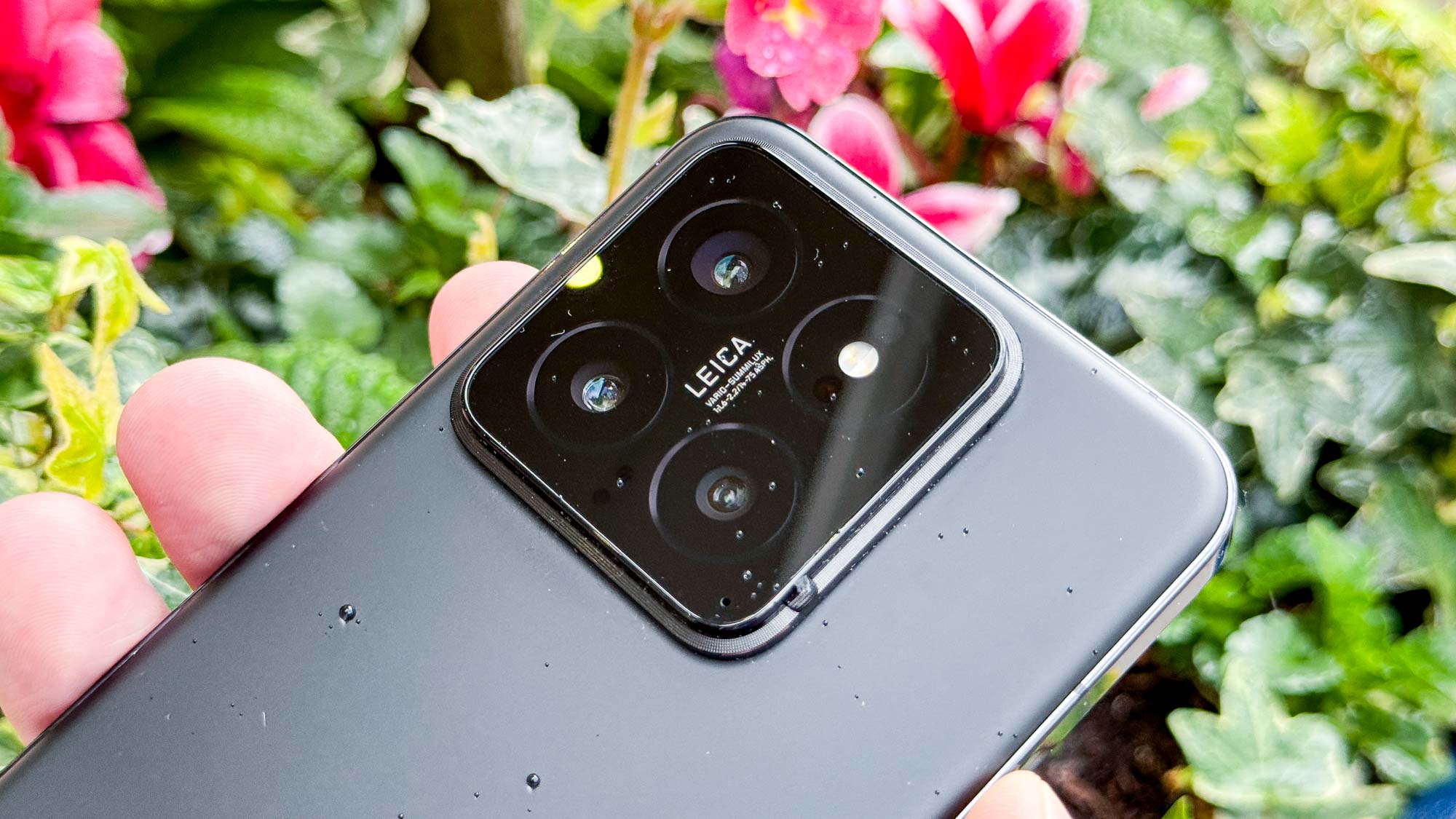
Starting as usual with a main camera test, we have below a shot across Paddington Station's interior against the iPhone 15 Pro Max. The Xiaomi's shot is much more colorful than the iPhone's, perhaps selling a lie about how sunny it was that day but otherwise producing a more attractive image. The iPhone's slightly higher contrast brings out some extra detail concealed in the Xiaomi photo though, such as the lines between the floor tiles.
Staying with the main cameras but moving to this night mode photo of St. John the Evangelist Church in Archway, we now see a brighter, higher contrast shot from the iPhone shot. That said, I do like the color of the image that the Xiaomi's produced here.
This ultrawide shot, taken outside the station, is brighter and cooler in the Xiaomi example, but lacks detail when compared to the iPhone image. The rainslick ground's reflections are present in both photos but are easier to see through the iPhone's lens.
Switching out the iPhone to the Galaxy S24 Ultra, I pointed the Xiaomi's 3.2x telephoto camera, and the Samsung's 3x camera, at the crest at the top of Paddington Station's main entrance. The Xiaomi 14's image is a bit dark, although it offers just as much detail as the Galaxy.
Finally, the portrait selfie test, again with the Xiaomi 14 against the Galaxy S24 Ultra. Samsung's phone does the bokeh-style cutout better, nailing the tricky interface between my glasses and the background while also emphasizing the image's highlights, most notably in my hair. The Xiaomi's image is smooth all around, from bringing the highlights in check to "beautifying" my face by flattening the texture of my skin. It looks good in a way, but I'm not used to seeing myself like that in selfies, making it simultaneously a bit odd.
Xiaomi 14: Performance
Qualcomm's Snapdragon 8 Gen 3 sits within the Xiaomi 14, along with 12GB RAM across all models, the same chip as many rivals but higher than average memory for its size. For instance, the Galaxy S24 and Pixel 8 both use 8GB of RAM, which should translate to better multi-tasking on the Xiaomi.
You can pick either 256GB or 512GB storage for the 14, which is on the generous side for a compact flagship. 128GB is the going default for Samsung, Apple and Google's base flagship phones.
Xiaomi 14: Battery and charging
Inside the Xiaomi 14 is a 4,610 mAh battery, which is a little larger than what you get in the Pixel 8 (4,575 mAh) and several hundred milliamp-hours larger than the Galaxy S24's or the iPhone 15 Pro's cells (4,000 mAh and 3,274 mAh respectively).
The Xiaomi's battery drained by 23% after three hours of playing a YouTube video at mid screen brightness and volume. Considering a larger, 5,000 mAh phone like the Galaxy S24 Ultra drains by 21% on the same test, it appears that the Xiaomi 14 has good battery life, but not a class-leading one.
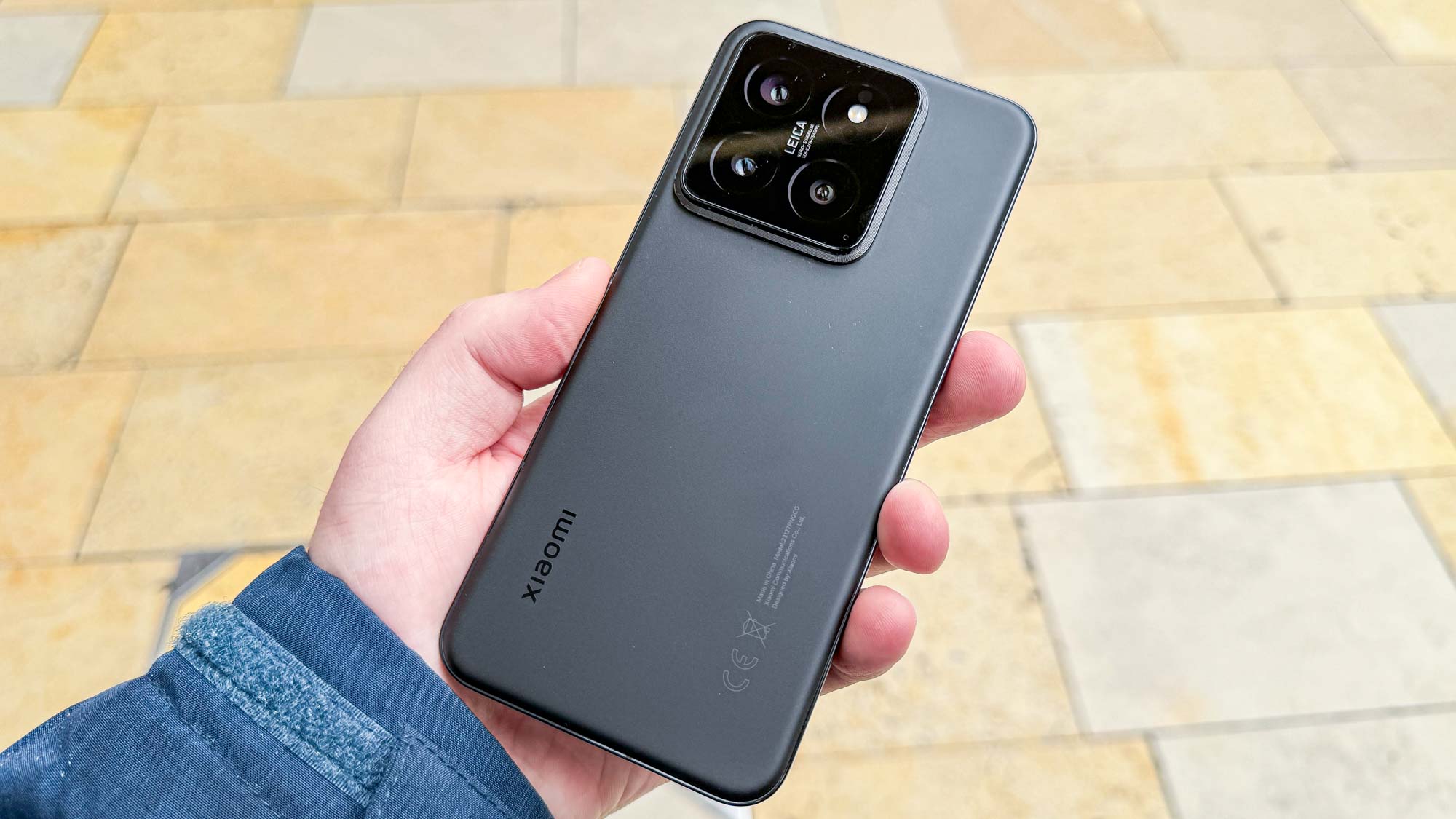
The Xiaomi 14's 90W wired charging and 50W wireless charging are indicative of the company's long-standing focus on charging speed. In our testing, the 90W brick included in the Xiaomi's box powered up the phone to 45% in 15 minutes, 80% in half an hour and full after 44 minutes. That's a long way ahead of the 25W charging offered by the Galaxy S24, which gets to 54% in half an hour, or the Google Pixel 8, which charges to 60% in half an hour with its 30W charger.
Xiaomi 14: Software and special features
You'll be using the Xiaomi 14 through HyperOS, Xiaomi's reinvented interface that replaces the old MIUI skin. Based on Android 14, HyperOS looks a lot like Xiaomi's old OS with lots of custom design elements and animation. But it does add a reworked Quick Settings menu that looks a lot like the iOS Control Center. This includes a redesigned lock screen system that also resembles the magazine-style lock screen of recent iPhones, plus new underpinnings for inter-device connectivity and AI features.
That said, there's nothing new to speak of beyond that, which is disappointing for what's being sold as a brand-new operating system. Perhaps HyperOS will grow into something interesting with future Xiaomi phones, but for now it's still very close to the familiar MIUI.
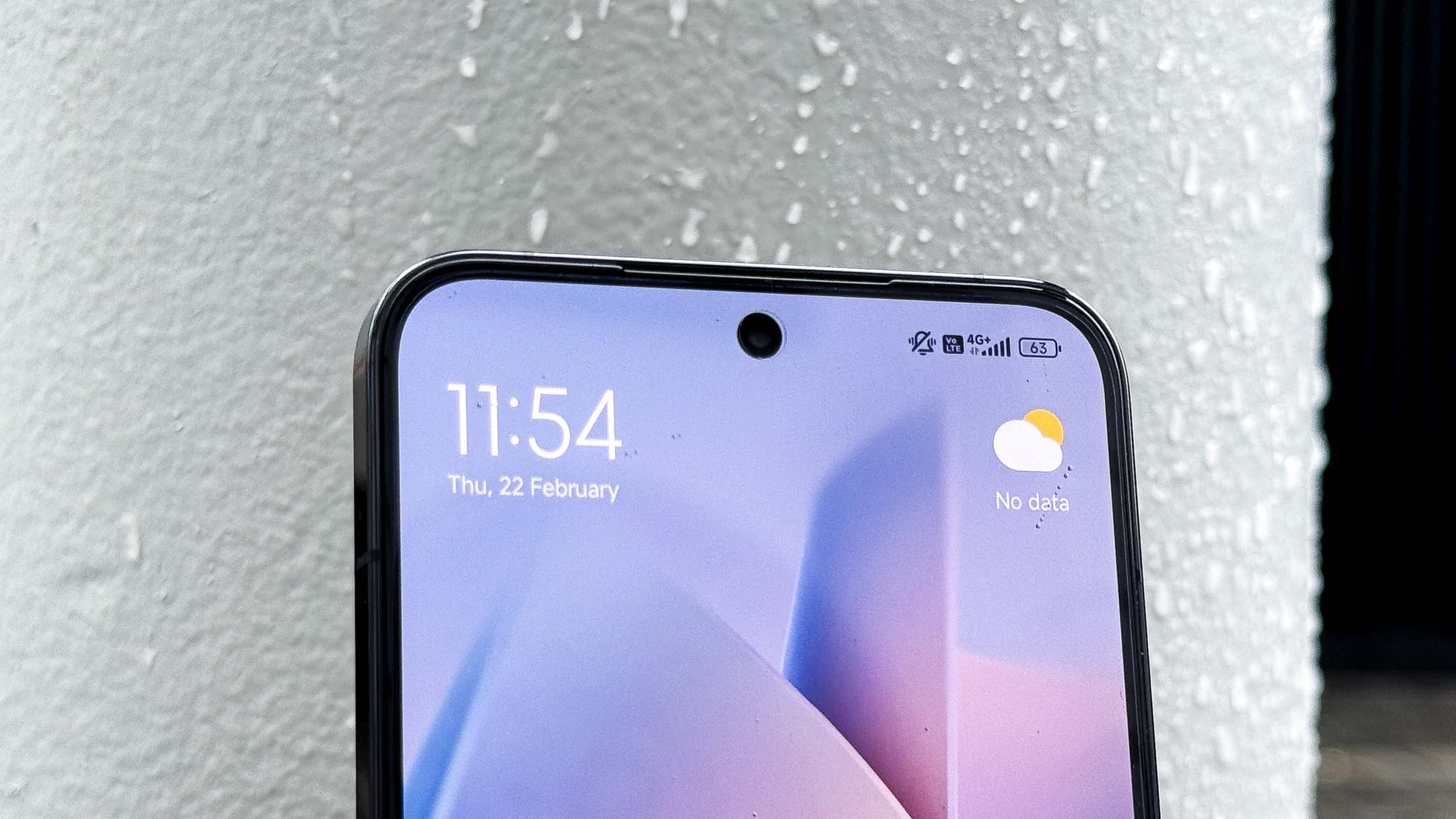
Xiaomi offers four years of full updates and five years of security updates for its phones, which until recently we'd have said was very good. But now that Samsung and Google offer seven years of full updates for their latest flagships phones, Xiaomi's policy looks a bit lacking.
Xiaomi 14 review: Verdict
Xiaomi's made another excellent flagship phone, and one that even U.S. users may be tempted to import from abroad to try. Just make sure you check the cell bands the phone and your carrier support before you do though.
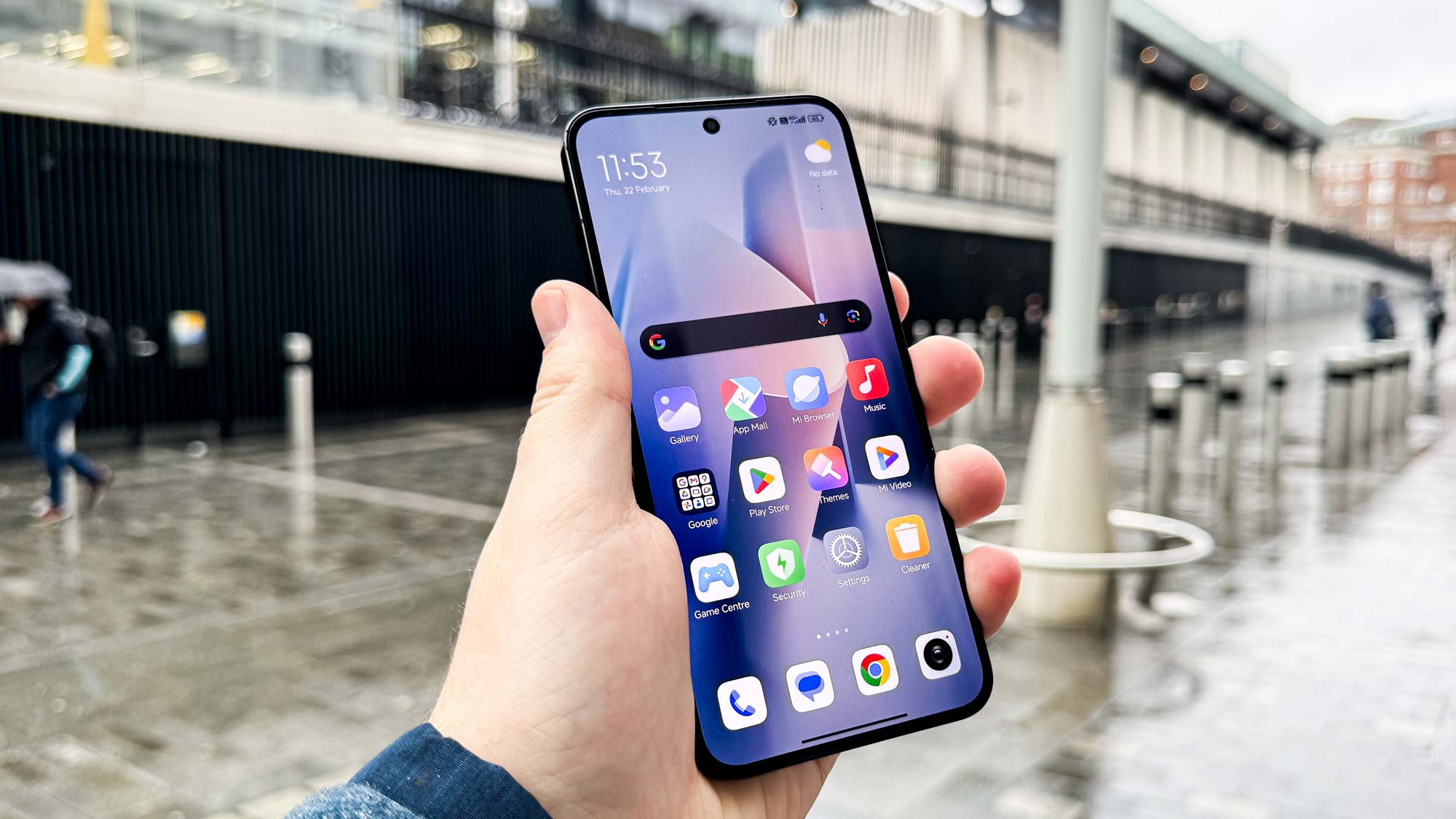
Although it's easier to buy a Pixel 8 or a Galaxy S24 or an iPhone 15 Pro, they all make sacrifices in areas where the Xiaomi excels, and with only a slight size difference. You could also go smaller with a clamshell foldable like the Samsung Galaxy Z Flip 5 or the diminutive Asus Zenfone 10, but neither of those will keep in up with the Xiaomi in terms of photos, charging speed or performance.
If you're in a country like the U.K. that will have the Xiaomi 14 regularly on sale, you should definitely give it a look alongside the other premium Android brands' latest offerings. The Xiaomi will fit the bill just as well if not better than its rivals. And that's both metaphorically and likely literally too.







